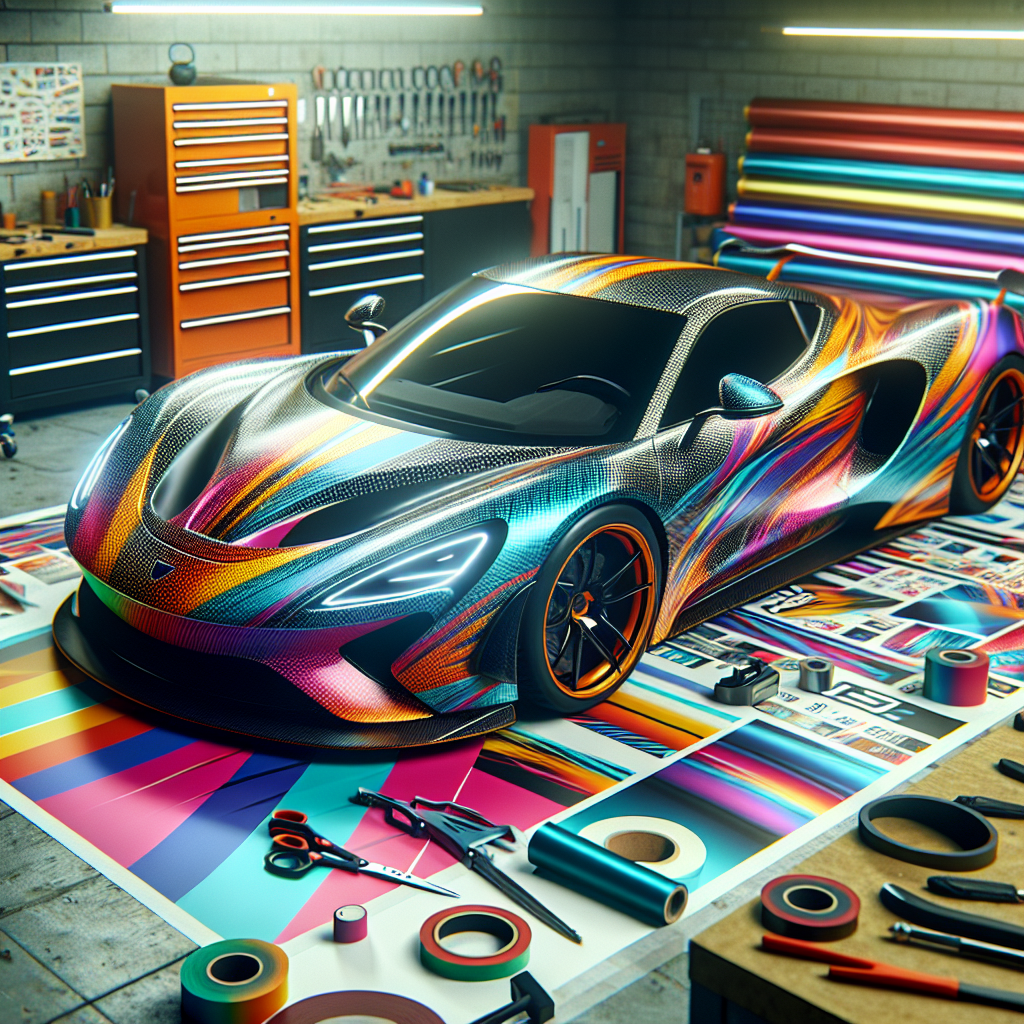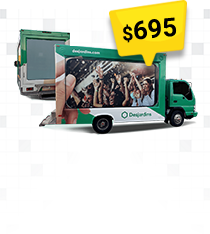Meta Description: Discover the art of designing a custom car wrap, from concept to completion, and learn how it enhances brand visibility and engagement.
Introduction
Have you ever noticed a colorful vehicle driving down the street, adorned with eye-catching graphics and logos? Custom car wraps have become an essential marketing tool for businesses looking to stand out in a crowded marketplace. In fact, studies show that vehicle wraps can generate up to 70,000 impressions per day! This blog post will explore the art of designing a custom car wrap, covering everything from initial concept development to the final installation. We will delve into the benefits, challenges, and future trends in this exciting field.
What is Designing a Custom Car Wrap?
Definition and How It Works
A custom car wrap is a vinyl graphic or decal applied directly to a vehicle’s exterior surface. Unlike traditional paint jobs, wraps can be removed without damaging the original paint underneath. This flexibility allows businesses to change their branding or marketing messages as needed.
The process of creating a custom car wrap begins with design. Designers use specialized software to create graphics that are both visually appealing and aligned with the brand’s identity. Once the design is finalized, it is printed onto high-quality vinyl material using large-format printers. The printed vinyl is then carefully applied to the vehicle by skilled installers who ensure a smooth finish without bubbles or wrinkles.
History and Evolution of Car Wraps
The concept of vehicle wrapping dates back to the 1980s when it was primarily used for advertising purposes by companies wanting to promote their products on delivery trucks. Over the years, advancements in printing technology and materials have made car wraps more accessible and affordable for businesses of all sizes. Today, custom car wraps are not only used for advertising but also for personal expression and customization.
Key Benefits of Custom Car Wraps
1. Increased Brand Visibility
One of the most significant advantages of custom car wraps is their ability to increase brand visibility. A well-designed wrap can turn any vehicle into a mobile billboard, reaching thousands of potential customers daily. According to research by the Outdoor Advertising Association of America (OAAA), vehicle wraps can generate between 30,000 to 70,000 impressions daily depending on traffic conditions.
This level of exposure is unmatched by traditional advertising methods such as print or radio ads. For example, a single vehicle wrap can reach more people than an ad in a local newspaper, making it an effective way to promote products or services.
- Real-World Example: A local pizza delivery service wrapped their fleet of delivery vehicles with vibrant graphics showcasing their menu items. As a result, they reported a 25% increase in orders within three months.
- Comparison: In contrast to billboards that require fixed locations and ongoing rental costs, car wraps offer continuous exposure without recurring fees.
2. Cost-Effectiveness
When comparing return on investment (ROI), custom car wraps often outperform other advertising methods. While the initial cost of designing and applying a wrap may seem high, consider this: wraps can last anywhere from five to seven years with proper care. This longevity means businesses can enjoy years of advertising without additional costs.
- Data-Backed Comparison: According to a study by 3M, vehicle graphics cost less than half as much per impression as traditional media like television or print ads.
- Budget Considerations: Businesses should factor in design costs, material quality, and installation fees when budgeting for a car wrap.
3. Audience Targeting
A custom car wrap allows businesses to target specific demographics effectively. By choosing where and when vehicles are driven, companies can reach their ideal audience based on location and time of day. For instance, a business targeting urban professionals might focus on busy city areas during rush hour.
- Demographic-Based Targeting: Companies can tailor their messaging based on local culture or events happening in specific regions.
- Case Study: A landscaping company wrapped their trucks with images of lush gardens and seasonal promotions during springtime when homeowners are most likely considering landscaping services.
Challenges & Common Misconceptions
1. Legal & Regulatory Issues
While custom car wraps offer many benefits, there are legal considerations that businesses must keep in mind. Local laws may regulate what can be displayed on vehicles for commercial purposes. It’s essential for companies to research regulations regarding advertising on vehicles in their area before proceeding with a wrap design.
- Sourcing Information: Check with local government agencies or consult legal experts specializing in advertising law.
- Solution: Ensure designs comply with regulations by avoiding inappropriate content or misleading information.
2. Design & Readability Challenges
The effectiveness of a custom car wrap heavily relies on its design quality. A poorly designed wrap can lead to confusion or misinterpretation of the brand message. To ensure maximum readability and impact, designers should follow best practices such as using bold colors, clear fonts, and concise messaging.
- Best Practices:
- Avoid cluttered designs that overwhelm viewers.
- Select colors that contrast well for better visibility from afar.
- Create designs that are easily recognizable at high speeds.
- Mobile Visibility: Consider how the design will look from different angles as vehicles move through traffic.
Step-by-Step Guide to Implementing Custom Car Wraps
Step 1: Planning & Budgeting
The first step in designing a custom car wrap is thorough planning and budgeting. Businesses should define their objectives clearly—whether it’s increasing brand awareness or promoting specific products—and identify their target audience accordingly.
- BUDGET CONSIDERATIONS:
- COST OF DESIGN: Hiring professional designers may incur additional expenses but can significantly improve results.
- MATERIALS: Invest in high-quality vinyl materials that withstand weather conditions for longevity.
- INSTALLATION FEES: Factor in costs associated with professional installation versus DIY options.
Step 2: Choosing the Right Design & Materials
The next step involves selecting an effective design that resonates with your target audience while reflecting your brand identity accurately. Collaborating with experienced graphic designers can help bring your vision to life while ensuring compliance with best practices discussed earlier.
- EFFECTIVE GRAPHICS:
- Create mood boards showcasing color palettes and imagery relevant to your brand theme.
- Aim for simplicity; less is often more when it comes to impactful designs.
- Select fonts that are legible from afar; avoid overly intricate styles that may confuse viewers.
- MATERIALS FOR DURABILITY:
- Select high-quality vinyl materials designed specifically for vehicle wrapping applications; these materials resist fading over time due to UV exposure.
- Add protective laminates if necessary; these coatings enhance durability against scratches or harsh weather conditions while maintaining visual appeal over time.
Step 3: Execution & Installation
The final step involves executing your plan through professional installation processes designed specifically for applying vinyl wraps onto vehicles effectively without compromising quality standards throughout each stage involved in this process!
- Smooth Implementation:
- Select reputable installers who specialize in vehicle wrapping; ask for samples of previous work before committing!
- Avoid DIY installations unless you have experience; improper application techniques could lead to costly mistakes down the road!
- Poor surface preparation leading up to installation; ensure surfaces are clean & free from debris beforehand!
- Lack of alignment during application resulting in crooked graphics; double-check positioning before adhering permanently!
Future Trends & Expert Insights
The world of custom car wraps continues evolving rapidly due mainly technological advancements influencing design possibilities along various aspects related production processes too! Emerging innovations include eco-friendly materials made from recycled plastics offering sustainable alternatives while maintaining quality standards expected today! Additionally digital printing technologies allow greater customization options enabling brands express themselves creatively through unique visuals tailored specifically towards target audiences effectively!
- PREDICTIONS FOR THE NEXT FIVE YEARS:
- A rise in demand for eco-friendly solutions as consumers become more environmentally conscious about their purchasing decisions!
< li>The integration of augmented reality features within designs allowing viewers interactively engage experiences beyond traditional static displays!
Conclusion
The art of designing a custom car wrap encompasses creativity combined with strategic planning aimed at maximizing brand visibility while minimizing costs associated traditional advertising methods! By understanding key benefits alongside challenges faced throughout this process—from legal considerations down execution stages—businesses can leverage these insights effectively enhance overall marketing efforts successfully! So why wait? Explore investing into creating your own unique vehicle wrap today!





No comments yet.